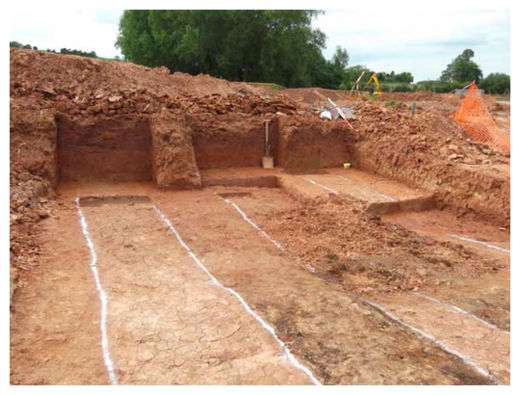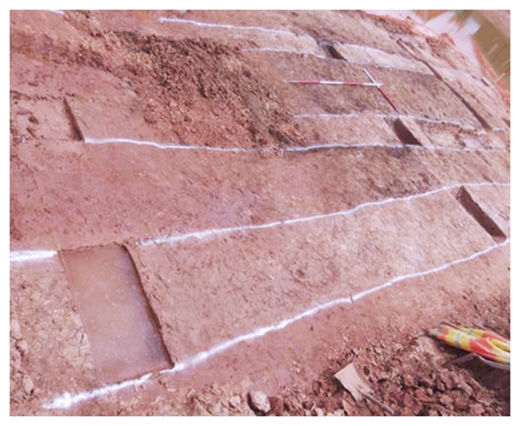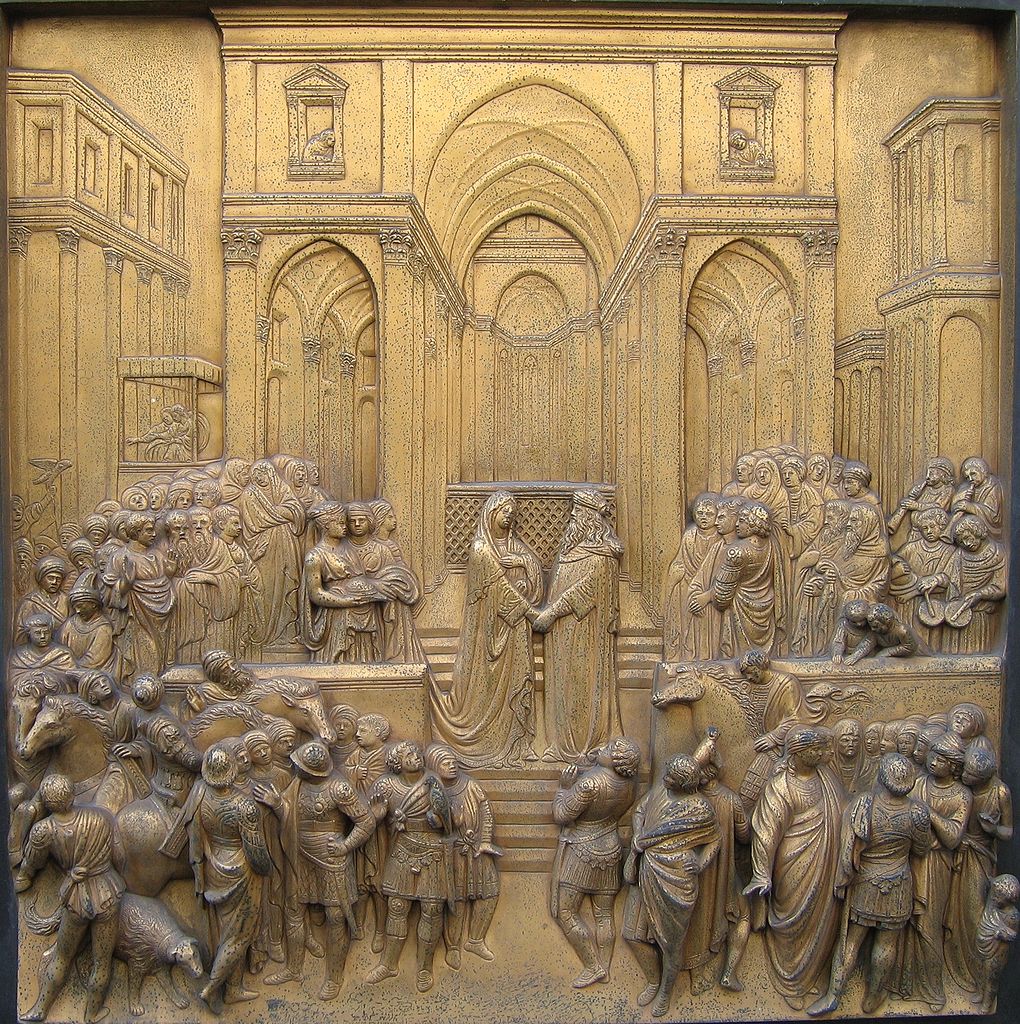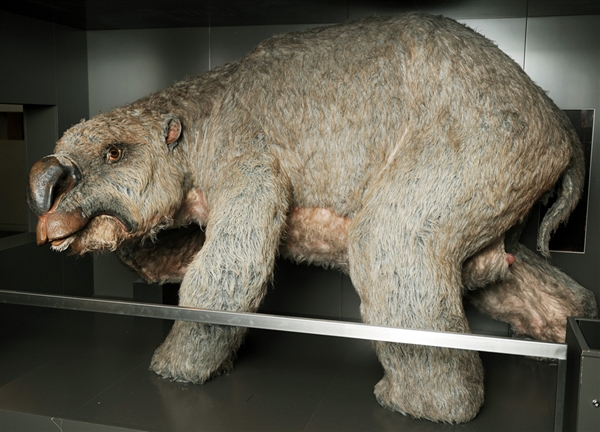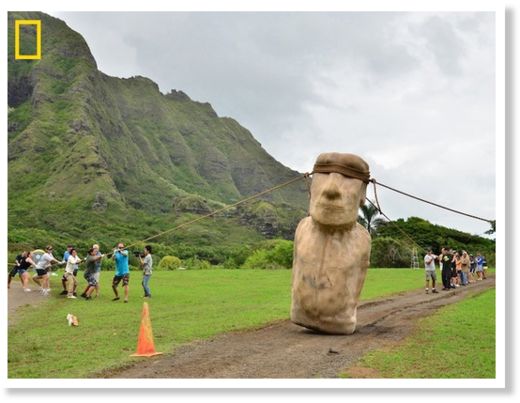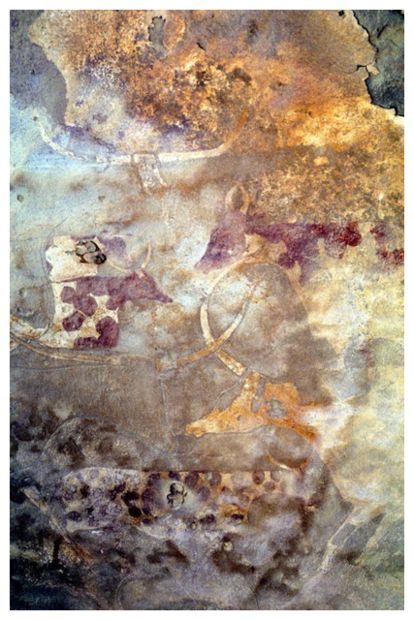
© Roberto Ceccacci, © The Archaeological Mission in the Sahara, Sapienza University of RomeColorful rock art of domesticated cattle decorates a wall at Wadi Imha in the Tadrart Acacus Mountains in the Libyan Sahara. Images like this reveal the importance of cattle to Neolithic African people.
The sandy dunes of the Sahara may seem an unlikely place for a dairy farm, but about 7,000 years ago, herders tended and milked cattle in what is now desolate desert, new research shows.
About 10,000 years ago, the Sahara desert went through a phase called the Holocene African Humid Period.
Fossilized bones show that by the sixth millennium B.C. (or about 7,000 years ago),
cattle, sheep and goats roamed over green savanna, and rock art depicts cows with full udders. The occasional image even shows milking, said study researcher Julie Dunne, a doctoral student at the University of Bristol. But it's difficult to get a firm date for those images.
By analyzing pottery fragments, Dunne and her colleagues have now shown that these early herders were not only milking their livestock, but also processing that milk into products like yogurt,
cheese and butter.
"The most exciting thing about this is that milk is one of the only foodstuffs that gives us carbohydrates, protein and fat," all in one substance, Dunne told LiveScience. "So it was incredibly beneficial for prehistoric people to use milk."
Saharan dairiesDunne and her colleagues analyzed tiny fragments of pottery taken from the Takarkori rock shelter, a prehistoric dwelling in the Libyan Sahara. They ground up small pieces of the pottery, conducting chemical analyses to investigate the proteins and fats embedded in the shards. By doing so, the researchers could see what the pots once held.
They found evidence of a varied diet, with signs found for plant oils and animal fat. The most common fats were of animal origin, Dunne said, with some deriving from flesh and others from milk. The most dairy-fat rich
pottery shards came from the same time periods when more cattle bones are found in the cave layers, the researchers reported today (June 20) in the journal
Nature.By looking at variations in the carbon molecules in these preserved fats, the researchers were able to get an idea of what kind of plants the cattle were eating. They found their diets varied between so-called C3, or woody plants, and C4 plants, which include grasses grains and dry-weather plants. (C3 and C4 refer to the type of photosynthesis these plants use.)
That fits with the archaeological understanding of this early herding civilization as moving between seasonal camps, Dunne said.
"It suggests that they were moving between summer and winter camps and eating different plants at one place than another, so this all ties together very nicely," she said.


